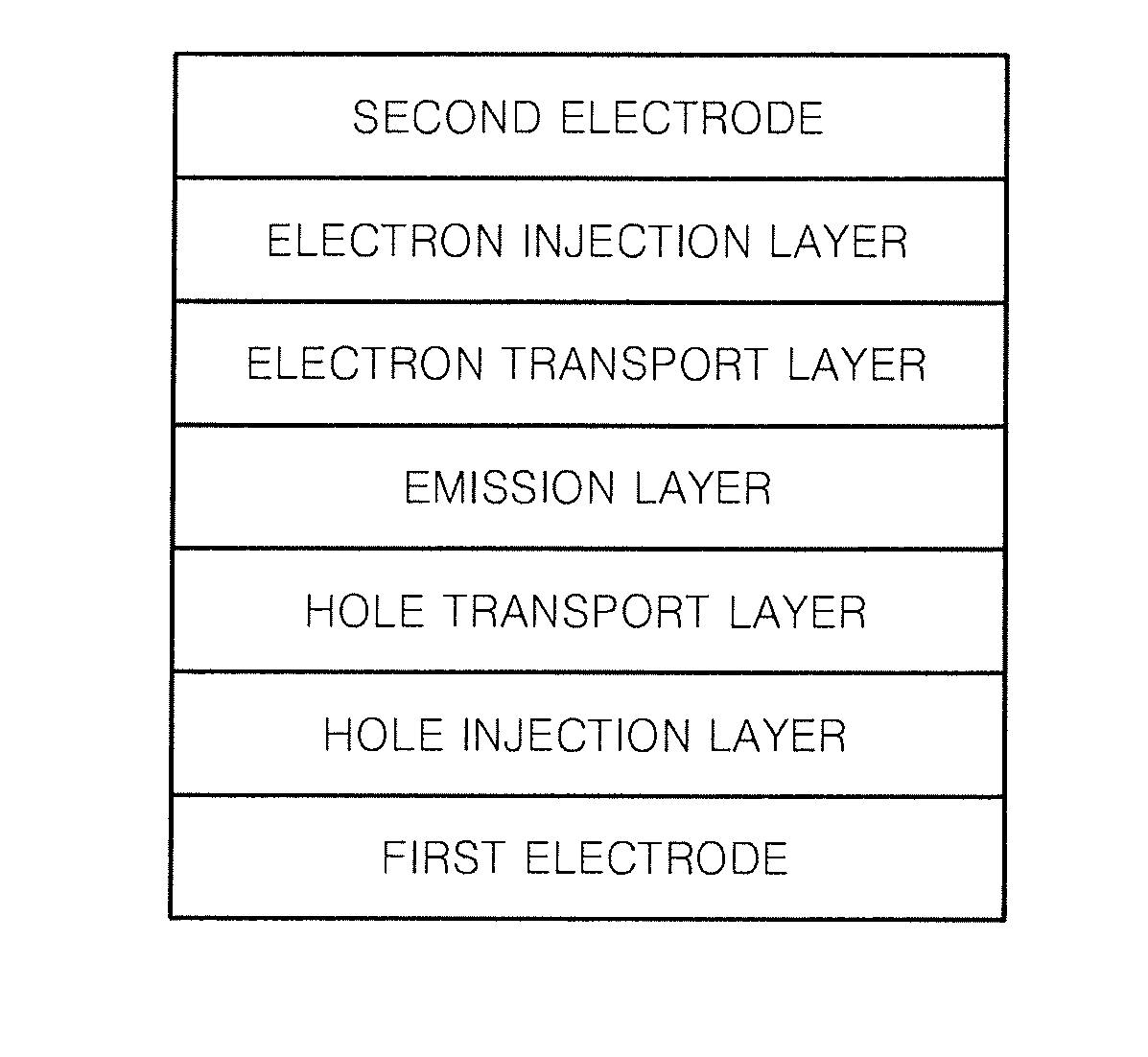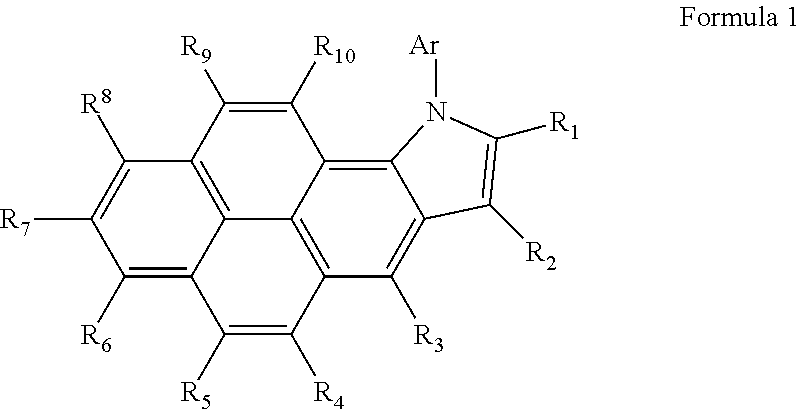Heterocyclic compound and organic light-emitting device including the same
- Summary
- Abstract
- Description
- Claims
- Application Information
AI Technical Summary
Benefits of technology
Problems solved by technology
Method used
Image
Examples
synthesis example 1
Synthesis of Compound 12
[0126]
Synthesis of Intermediate 1
[0127]2.81 g (10 mmol) of 1-bromopyrene, 2.16 g (11 mmol) of benzophenone hydrazone, 1.44 g (15 mmol) of t-BuONa, 45 mg (0.2 mmol) of Pd(OAc)2, and 82 g (0.2 mmol) of 2-dicyclohexylphosphino-2′,4′,6′-triisopropylbiphenyl were dissolved in 30 mL of toluene and stirred at 90° C. for 3 hours. The reaction product was cooled to room temperature. Distilled water was added thereto and the product was extracted twice with 80 mL of diethylether and once with 80 mL of dichloromethane. The organic layer was collected and dried using magnesium sulfate, followed by filtration. The solvent was evaporated, and the residue was separated and purified using silica gel column chromatography to obtain 3.37 g (yield: 85%) of Intermediate 1. This compound was identified using high-resolution mass spectroscopy (HR-MS). C29H20N2 calc.: 396.1626; found 396.1630.
Synthesis of Intermediate 2
[0128]50 mL of methylethylketone was added to a mixture includi...
synthesis example 2
Synthesis of Compound 23
[0132]
Synthesis of Intermediate 5
[0133]1.2 g (3.0 mmol) of Intermediate 1, 1.14 g (6.0 mmol) of p-toluenesulfonic acid monohydrate, and 1.2 g (6.0 mmol) of benzylphenylketone were dissolved in 16 mL of ethanol and 4 mL of toluene 80 mL and stirred at 110° C. for 24 hours. The reaction product was cooled to room temperature. Distilled water was added thereto and the product was extracted twice with 25 mL of diethylether and twice with 25 mL of dichloromethane. The organic layer was collected and dried using magnesium sulfate, followed by filtration. The solvent was evaporated, and the residue was separated and purified using silica gel column chromatography to obtain 0.86 g (yield: 73%) of Intermediate 5. This compound was identified using HR-MS. C30H19N calc.: 393.1517; found 393.1521.
Synthesis of Compound 23
[0134]Compound 23 was synthesized with a yield of 68% in the same manner as Compound 12, except that Intermediate 5 was used instead of Intermediate 2 an...
synthesis example 3
Synthesis of Compound 36
[0135]
Synthesis of Intermediate 6
[0136]Under a nitrogen atmosphere, 1.10 g (5.0 mmol) of N-phenyl-2-naphthylamine, 1.56 g (5.5 mmol) of 1-bromo-4-iodobenzene, 1.4 g (15 mmol) of t-BuONa, 91 mg (0.10 mmol) of Pd2(dba)3, and 20 mg (0.10 mmol) of P(t-Bu)3 were dissolved in 30 mL of toluene and stirred at 90° C. for 3 hours. After the reaction was completed, the reaction product was cooled to room temperature and extracted three times with distilled water and 50 ml of diethylether. The organic layer was collected and dried using magnesium sulfate to evaporate the solvent. The residue was separated and purified using silica gel column chromatography to obtain 1.5 g (yield: 82%) of Intermediate 6. This compound was identified using HR-MS. C22H16BrN calc.: 373.0466; found 373.0470.
Synthesis of Compound 36
[0137]Compound 36 was synthesized with a yield of 62% in the same manner as Compound 12, except that Intermediate 5 was used instead of Intermediate 2 and Intermedi...
PUM
| Property | Measurement | Unit |
|---|---|---|
| Time | aaaaa | aaaaa |
| Time | aaaaa | aaaaa |
| Time | aaaaa | aaaaa |
Abstract
Description
Claims
Application Information
 Login to view more
Login to view more - R&D Engineer
- R&D Manager
- IP Professional
- Industry Leading Data Capabilities
- Powerful AI technology
- Patent DNA Extraction
Browse by: Latest US Patents, China's latest patents, Technical Efficacy Thesaurus, Application Domain, Technology Topic.
© 2024 PatSnap. All rights reserved.Legal|Privacy policy|Modern Slavery Act Transparency Statement|Sitemap



